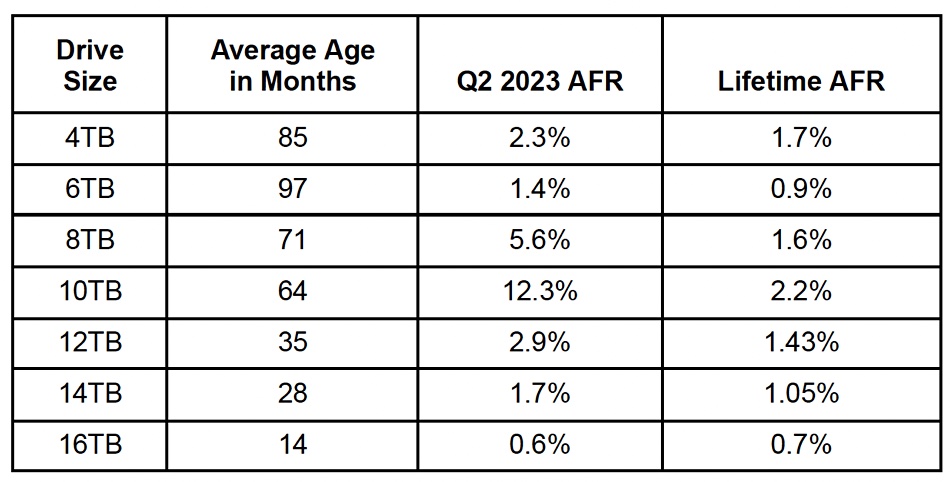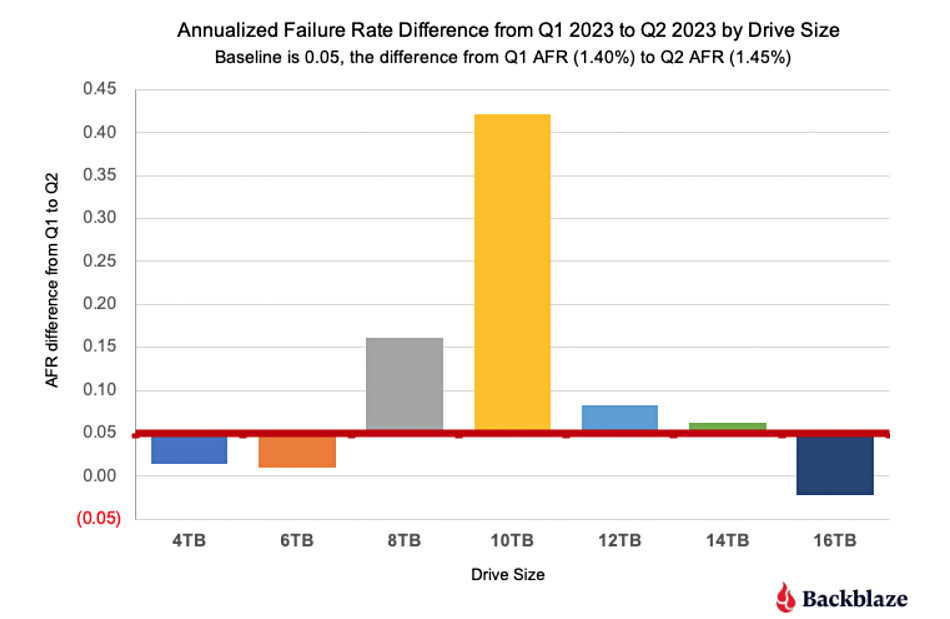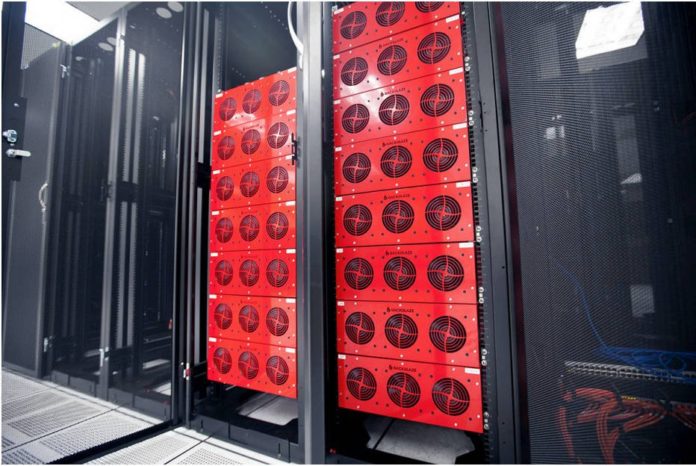Cloud storage provider BackBlaze has reported an increase in annual failure rates for its 8TB and 10TB disk drives.
The company currently maintains a population of 241,297 disk drives and diligently tracks their failure rates by parameters such as capacity, model type, and manufacturer. In addition to this, BackBlaze publishes quarterly and lifetime annualized failure rate (AFR) statistics each quarter.
In the second quarter of 2023, the firm reported an average AFR of 2.28 percent, a noticeable increase from 1.54 percent in Q1 2023. Upon further analysis of the AFRs by drive capacity, the company identified that the 8TB and 10TB capacities experienced particularly high quarterly AFRs, with the 10TB drives topping the list.

BackBlaze also studied the quarterly AFR trends over a three-year period for its older drives, those aged five years or more, while excluding 12TB and larger drives. The data compiled revealed the recent uplifts in the AFRs.

The company also found that the lifetime annualized failure rate for all its drives in Q2 was 1.45 percent compared to 1.40 percent in Q1. A more detailed examination of the Q1/Q2 AFR differences for drives by capacity confirmed the observed increase in failure rates for the 8TB and 10TB drives.

Backblaze blogger Andy Klein wrote: “The red line is our baseline as it is the difference from Q1 to Q2 (0.05%) of the lifetime AFR for all drives. Drives above the red line support the increase, drives below the line subtract from the increase.”
While BackBlaze has yet to pinpoint the exact cause behind the increased AFR, the age of the drives appears to be the most probable factor. The 8TB drives originate from manufacturers including Hitachi GST (11,205), Seagate (23,625), and Toshiba (61), while the 10TB models are all from Seagate (1,124). Given that the average age of these drives is over 60 months, it appears that the five-year mark may represent a threshold for an increased likelihood of failure.
Upon drive failure, data recovery operations are launched and the faulty drives are promptly replaced. As Klein wrote: “Are we worried about the increase in drive failure rates? Of course we’d like to see them lower, but the inescapable reality of the cloud storage business is that drives fail.”








